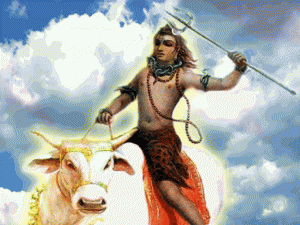3




















| Thumbs Up |
| Received: 1,458 Given: 1,641 |

Zebu bull from IVC - 3000 BCE
Genomic clues of the evolutionary history of Bos indicus cattle
Y. T. Utsunomiya M. Milanesi M. R. S. Fortes L. R. Porto‐Neto A. T. H. Utsunomiya M. V. G. B. Silva J. F. Garcia P. Ajmone‐Marsan
https://onlinelibrary.wiley.com/doi/abs/10.1111/age.12836
Together with their sister subspecies Bos taurus, zebu cattle (Bos indicus) have contributed to important socioeconomic changes that have shaped modern civilizations. Zebu cattle were domesticated in the Indus Valley 8000 years before present (YBP). From the domestication site, they expanded to Africa, East Asia, southwestern Asia and Europe between 4000 and 1300 YBP, intercrossing with B. taurus to form clinal variations of zebu ancestry across the landmass of Afro‐Eurasia. In the past 150 years, zebu cattle reached the Americas and Oceania, where they have contributed to the prosperity of emerging economies. The zebu genome is characterized by two mitochondrial haplogroups (I1 and I2), one Y chromosome haplogroup (Y3) and three major autosomal ancestral groups (Indian‐Pakistani, African and Chinese). Phenotypically, zebu animals are recognized by their hump, large ears and excess skin. They are rustic, resilient to parasites and capable of bearing the hot and humid climates of the tropics. Many resources are available to study the zebu genome, including commercial arrays of SNP, reference assemblies and publicly available genotypes and whole‐genome sequences. Nevertheless, many of these resources were initially developed to support research and subsidize industrial applications in B. taurus, and therefore they can produce bias in data analysis. The combination of genomics with precision agriculture holds great promise for the identification of genetic variants affecting economically important traits such as tick resistance and heat tolerance, which were naturally selected for millennia and played a major role in the evolution of B. indicus cattle.
Zebu cattle are an exclusive legacy of the South Asia neolithic.
Chen S, Lin BZ, Baig M, Mitra B, Lopes RJ, Santos AM, Magee DA, Azevedo M, Tarroso P, Sasazaki S, Ostrowski S, Mahgoub O, Chaudhuri TK, Zhang YP, Costa V, Royo LJ, Goyache F, Luikart G, Boivin N, Fuller DQ, Mannen H, Bradley DG, Beja-Pereira A.
https://www.ncbi.nlm.nih.gov/pubmed/19770222
Abstract
Animal domestication was a major step forward in human prehistory, contributing to the emergence of more complex societies. At the time of the Neolithic transition, zebu cattle (Bos indicus) were probably the most abundant and important domestic livestock species in Southern Asia. Although archaeological evidence points toward the domestication of zebu cattle within the Indian subcontinent, the exact geographic origins and phylogenetic history of zebu cattle remains uncertain. Here, we report evidence from 844 zebu mitochondrial DNA (mtDNA) sequences surveyed from 19 Asiatic countries comprising 8 regional groups, which identify 2 distinct mitochondrial haplogroups, termed I1 and I2. The marked increase in nucleotide diversity (P < 0.001) for both the I1 and I2 haplogroups within the northern part of the Indian subcontinent is consistent with an origin for all domestic zebu in this area. For haplogroup I1, genetic diversity was highest within the Indus Valley among the three hypothesized domestication centers (Indus Valley, Ganges, and South India). These data support the Indus Valley as the most likely center of origin for the I1 haplogroup and a primary center of zebu domestication. However, for the I2 haplogroup, a complex pattern of diversity is detected, preventing the unambiguous pinpointing of the exact place of origin for this zebu maternal lineage. Our findings are discussed with respect to the archaeological record for zebu domestication within the Indian subcontinent.
Earliest Hindu god Shiva, who probably was from early copper age based on dress and possessions, used the Nandi bull as the vehicle. Even today temples all over India have a statue of this humped Bull. Looks like very successful utilization of this species during the early Chalcolithic and commerce along the Neolithic bidirectional Middle East/West Asia/Iran/India route taken by active inhabitants of the Neolithic timeframe. Due to heavy commerce and trade there was active trade network that carried many people back and forth. The presence of South Asian component in these places even today support this fact.

Yfull [B]ID: YF83218 admix -> https://i.ibb.co/NjwQTz6/myherit1.png
G25 Distance: 1.0778%
86.2 IRN_Shahr_I_Sokhta_BA2
5.2 ITA_Sardinia_C_o:I15940 1.4 ITA_Daunian
3.6 PAK_Saidu_Sharif_H
3.6 VK2020_SWE_Gotland_VA:VK464


















| Thumbs Up |
| Received: 29,829 Given: 24,541 |

Zebus are the perfect cattle species for them to stand the heat of Asia and beyond.


















| Thumbs Up |
| Received: 1,458 Given: 1,641 |

Yfull [B]ID: YF83218 admix -> https://i.ibb.co/NjwQTz6/myherit1.png
G25 Distance: 1.0778%
86.2 IRN_Shahr_I_Sokhta_BA2
5.2 ITA_Sardinia_C_o:I15940 1.4 ITA_Daunian
3.6 PAK_Saidu_Sharif_H
3.6 VK2020_SWE_Gotland_VA:VK464


















| Thumbs Up |
| Received: 29,829 Given: 24,541 |
There are currently 1 users browsing this thread. (0 members and 1 guests)
Bookmarks